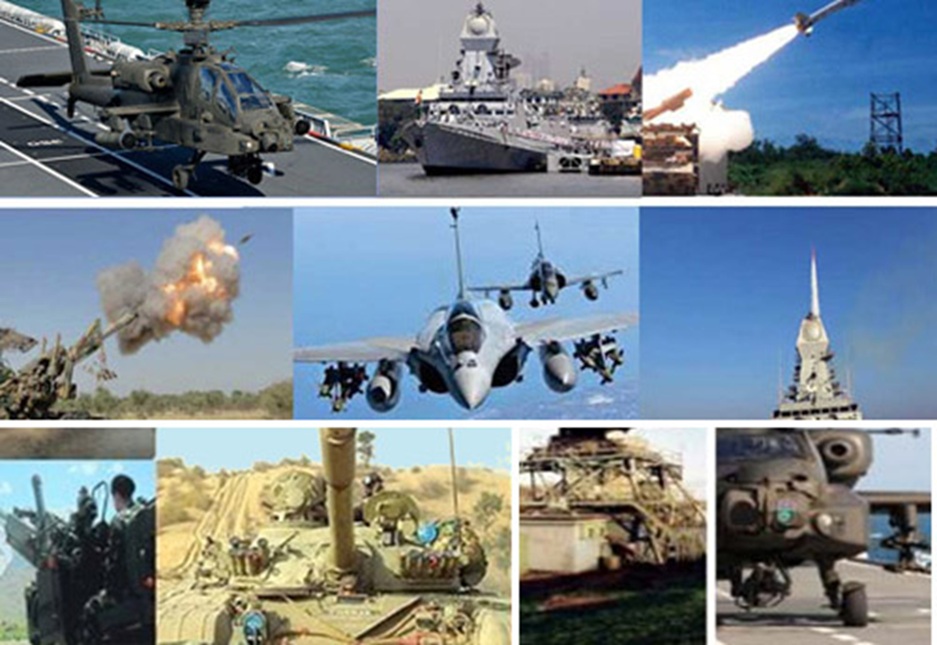Since culture is a shared experience for a group of people, it includes the material traits of a racial, religious or social group. The historical experiences of states, their shared identity as a state, and the influence of culture shape the strategic culture.
Every nation navigates its destiny not merely through weapons and alliances, but through an invisible compass called strategic culture. It is a deep imprint – shaped by history, belief systems, geography, and national traumas – that quietly guides how states see threats, perceive rivals, and choose between war and peace.
Nowhere is this cultural fingerprint more visible than in South Asia, where India, Pakistan, and China – three nuclear-armed neighbours – circle each other with suspicion, ambition, and memories that stretch centuries deep. Their strategic outlooks are not merely policy choices; they are extensions of civilizational instincts. A resurgent Islamist Bangladesh adds to the complexity. The result is a region riddled with contradictions: armed to the teeth, yet unable to find lasting peace; economically interlinked, yet politically fractured; culturally rich, yet strategically brittle.
Ancient Paths, Modern Postures: Roots of Asian Strategic Culture
India’s strategic mindset is a product of continuity. Its epics – the Mahabharata and Ramayana – are not just stories, but blueprints of diplomacy, war, and righteous rule. Kautilya’s Arthashastra laid out a remarkably modern worldview on statecraft, balancing idealism with realism. Despite centuries of invasions, colonialism, and partitions, India’s civilizational memory promotes the idea of peace with strength. At its philosophical core lies VasudhaivaKutumbakam – “the world is one family” – but that idealism is tempered by a growing realism in recent decades.
In contrast, China’s strategic culture is forged in cycles of unification and fragmentation. The Middle Kingdom’s historical worldview sees China as the central, civilised power surrounded by lesser states. Confucian order, legalist pragmatism, and the trauma of the “Century of Humiliation” have built a mindset that seeks dominance to avoid vulnerability. Today’s Chinese strategy – marked by incremental territorial assertions and long-term planning – echoes Sun Tzu more than Mao but carries both their shadows.
Pakistan’s strategic psyche is carved out of insecurity and identity crisis. Born at the crossroads of India, its narrative was built not just on governance but on ideology. The Pakistani Army, shaped by the trauma of Partition’s repeated defeats and a self-given mission to preserve ideological purity, has become both guardian and gatekeeper of Pakistan’s strategic mind. It sees India not just as a rival, but as an existential challenge, and its doctrine blends revisionism with religious nationalism. Strategic patience or economic calculus rarely trumps ideological zeal.
Collision, Collusion and Compromise: The India-Pakistan-China Triangle
The India-China-Pakistan triangle is not just a geographic reality. It’s a living contradiction. India faces adversaries both in the west and north: to its west, Pakistan’s proxy war and terrorist networks test its patience; to its north, China’s salami-slicing tactics in the Himalayas test its resolve. Each adversary is different, yet increasingly aligned. The China-Pakistan nexus – rooted in infrastructure, arms, and shared antagonism towards India – has created a pincer around New Delhi’s strategic space.
Pakistan sees in China a dependable big brother – one that builds roads, funds ports and stands by its side diplomatically. But it is also a relationship of necessity. Pakistan’s economy is too fragile and its international image is too bruised to carry its strategic ambitions alone. China, meanwhile, views Pakistan as a low-cost spoiler against India. Through the China-Pakistan Economic Corridor (CPEC), Beijing has tied its Western ambitions to Pakistan’s terrain. But this partnership comes with its limits. China wants influence, not instability. A volatile Pakistan threatens its investments and global image.
India, for its part, remains a balancing force. It has no expansionist ambition, yet finds itself encircled. In recent years, India has made a conscious effort to shake off its old constraints, taking bold steps like revoking Article 370 in Kashmir, hitting back hard against Pakistan-backed terror attacks, and standing its ground firmly against Chinese incursions in places like Doklam and Galwan. Yet, challenges persist. India must balance assertiveness with restraint, and self-reliance with global partnerships.
The Bangladesh Variable: A New Triangle Emerges
Even as the subcontinent watches the older triangular drama unfold, a new triangle is taking shape: India–China–Bangladesh. And it could redefine the region’s future.
The appointment of Muhammad Yunus as Chief Adviser to Bangladesh’s interim government has unmistakably reshaped the regional landscape. Unlike previous transitions that maintained a degree of consistency in Dhaka’s foreign policy, the Yunus administration is signalling a deliberate break from that tradition. What we are seeing is not an open realignment yet, but the signs point towards a gradual repositioning: away from India’s strategic embrace and towards a more coordinated understanding with Beijing and Islamabad.
The new caretaker government is allowing once-banned Islamist groups to resurface in the political mainstream, adopting a more conciliatory tone towards Pakistan, and renewing stalled Chinese investment projects with fresh urgency. It hints at the early formation of a softer alignment, one that could erode India’s strategic depth on its eastern flank.
What emerges is a quiet, triangular understanding: China encircling India from the east, Pakistan finding new traction in Bengali political discourse, and Bangladesh less aligned with Indian interests than at any point in recent memory.
It is a slow-burn realignment cloaked in the language of democratic transition, but its direction could have far-reaching consequences. India must now contend with the prospect that two of its key regional rivals may be gaining a partner on its doorstep – not through military manoeuvres, but through diplomacy, economic leverage, and ideological openings.
Strategic Recommendations for India: From Compass to Course Correction
India cannot afford to sit on the sidelines anymore. The region around us is shifting fast. China and Pakistan are working more closely than ever, and old assumptions about Bangladesh can no longer be taken for granted. These are not situations we can fix with symbolic outreach or rushed diplomacy. They call for a clear-eyed, sustained strategy and aligning strategic culture.
First, we need to regain lost ground in our neighbourhood. That begins with treating our neighbours as genuine partners, not as smaller states to be managed. Real influence is built over time, through political trust, steady engagement, and economic projects that deliver. It’s not enough to offer alternatives to China. They have to be credible, consistent, and rooted in mutual interest.
Second, we must invest more seriously in deterrence. That means building a defence industrial base we can count on, ensuring better coordination across our military services, and maintaining a strong presence in both the Indian Ocean and the northern border. The idea isn’t a confrontation. It’s preparedness. We need to be in a position where we set the pace, not wait for others to act first.
Third, we need to speak with a steadier voice – both abroad and at home. Our strength won’t just come from missiles or GDP numbers. It will come from clarity, consistency, and the belief that India stands for something bigger than itself. Many countries already see us as a natural leader. But that leadership must be earned by example, not assumption.
And finally, we have to stop treating domestic cohesion as a secondary issue. Divisions at home – social, political, or economic – don’t stay contained. They weaken us where it matters most: in our ability to lead, to act with confidence, and to build trust beyond our borders. A fractured India will always be at a disadvantage, no matter how strong its economy or military may be.
The choices ahead aren’t simple. But the opportunity is real. What is needed now is not just power – it is seriousness of purpose, patience, and the discipline to stay the course.
Title Image Courtesy: NDTV
Disclaimer: The views and opinions expressed by the author do not necessarily reflect the views of the Government of India and Defence Research and Studies
Article Courtesy: https://raksha-anirveda.com/







